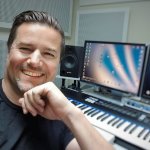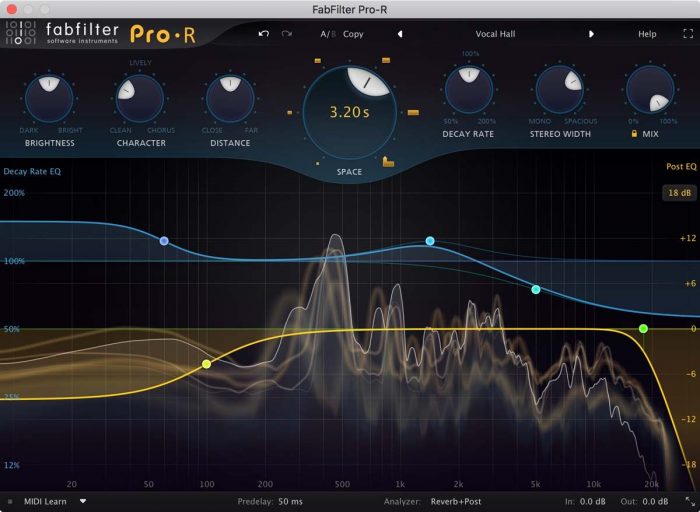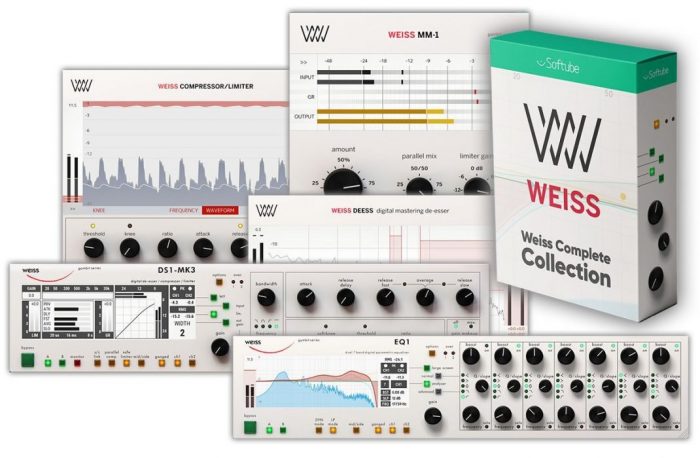Best Studio Monitors
Great studio monitor speakers are essentially designed to reveal an accurate picture of the audio you’re producing. Being aware of your errors allows you to make corrections. It’s that simple. You can be confident that your music will sound just as good on other systems (club, car, etc.) if it sounds good on high-quality speakers at home. And that is precisely the goal! Therefore, investing in the best studio monitors is a surefire way to significantly enhance your ability to create music, samples, synth patches, etc. Furthermore, working with quality studio monitors is much more enjoyable than wearing headphones all the time, which is also taxing on the ears.
I mainly produce techno sample packs myself – beat-and bass-heavy material. My listening room is about 30 square meters and is acoustically optimized with Renz BKA Absorbers and a few other modules. I’ve tested a variety of monitor speakers at my studio over the last few years (Adam, Focal, JBL, PSI Audio, etc.). I always advise using a program like Room EQ Wizard to assess the room’s acoustics. This way you can identify problems in the room in order to specifically eliminate them. Which is often underestimated: It is important that the speakers are absolutely secure. Nothing should vibrate, not even at higher volumes. The firmer the stand, the drier the bass is reproduced, which is extremely important, especially for techno producers.
Since I am also in contact with many other musicians, sound designers, and mastering studios, I would like to share my experience here. In my opinion, the following studio monitors from the upper price segment worked best. For detailed specifications about the following studio monitors please visit the linked websites of the manufacturers.
Abacus Mirra 14
To get straight to it. For me, the 3-way fully active Abacus Mirra 14 is the best studio monitor I have worked with so far.
Before I finally bought it, I requested the test package. The amount was later deducted from the purchase. A good service in my opinion. And what can I say: I was thrilled from the start like never before.
This speaker has made my way of working much easier. I can achieve top results very quickly. My ears don’t get tired with these monitors even after working in the studio for 12 hours. They don’t only look great (I like this horizontal setup), but they also sound great.
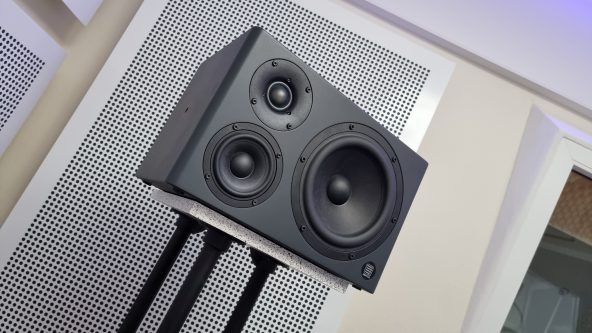
There are serious amplifiers and DSP work. The Mirra 14 reaches down to 16Hz and finally, I can work on the sub-low frequencies much better than ever before. They translate insanely well, with a defined and dry bass response. What also surprises me is that the bass can be heard even when listening at quieter levels. With some speakers, the bass is harder to judge at lower volumes. This is a huge advantage because I generally don’t listen too loudly. Also, the mid-range sounds incredible and the high-end is tight. Everything was done right here. The speaker is super precise, super honest, and super fast – even in the subs. And the ability to judge the bass/sub-bass very well is extremely important for techno producers. The Mirra 14 is impeccably crafted down to the last detail.
It may be your room or your abilities, not the fault of the speakers if you are unable to mix with these. Of course, it takes some time to comprehend the specifics of what these speakers offer and how they differ from your previous setup, but once you do, you’ll feel confident in their abilities. As a music enthusiast, the well-produced tracks will sound unique and cause shivers.
Air noise and the muddy sound produced by traditional bass reflex systems are absent from the closed system. Almost no noise is audible when it is turned on. Not all speakers exhibit this behavior, either. Last but not least, I also love the fairly wide sweet spot. This is not always the case with other manufacturers. Often you have to sit at exactly the perfect point in the studio so that you can judge everything exactly. This is quite stunning and refreshingly different.
Compared to other studio monitors that I have tested so far, the Mirra is noticeably uncritical when it comes to the installation location. You can also place them near a back wall without any problems. However, I get optimal sound results when placed freely at a distance of around 40 cm from the rear wall and at least 80 cm from each side wall. What is also particularly positive to mention is that the ABACUS service is extremely competent and helpful. I have rarely seen a company that takes so much time for its customers. The employees here still put their heart and soul into their work.
It is one of the best investments I have ever made. Highly recommended!
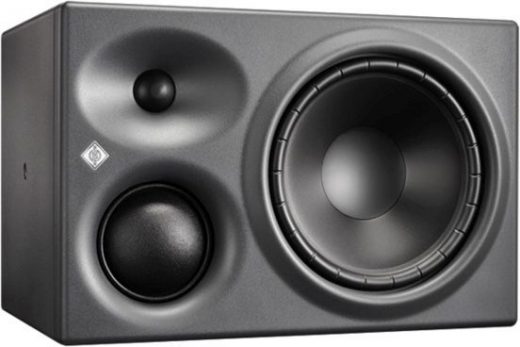
Neumann KH 310
For a number of reasons, the Neumann KH 310 A are among the best professional-grade studio monitors currently on the market. Tri-amplified high-resolution near-field monitor designed for a dry bass and midrange sound. The low-end response is first-rate and ideal for all kinds of music. The high ends sound natural and smooth, and the midrange is incredibly clear.
The KH 310 A monitors are excellent for rooms with irregular layouts because they have a fairly wide sweet spot as well. This is a characteristic that is rarely found. The closed system is free of air noise and the muddy sound produced by conventional bass reflex systems. It has an excellent bass capability down to 34 Hz and its closed design enables a very fast transient response. However, when determining the required power
below about 40 Hz, a subwoofer remains useful as they do distort in the deep bass when pushed too hard. With the KH 750 DSP subwoofer and optional tools, the KH 310 can be controlled and aligned to the room. This is a real plus point, especially when room acoustics are critical. In comparison, the Mirra 14 reaches down to 16Hz and therefore 1 octave lower without an external subwoofer, which is simply unbelievable to me. But even regardless of the sub-bass range, the KH 310 didn’t fit me in the studio quite as well as the Mirra 14. It’s difficult to describe, and certainly often a question of taste. Nevertheless, the Mirra 14 convinced me more – and not just because of the price. But the KH 310 is of course also an amazing studio monitor – no question about it.
Genelec 1032 C
For hours of work in the studio, this is also a fascinating and accurate speaker.
The outcome is impressive: tight bass without any murmur, very clear highs without any artificial fizz, and clean mids without any sharpness. The frequency band is very broad. With the Genelec 1032 calibration kit (which they sell separately), you can manage and calibrate them thanks to the DSP integration. A subwoofer is not necessary unless you mix sound for cinema. The bass is absolutely clean and dry. This one works well in medium-sized to large rooms.
Impressive views and spatial depth, with individual instruments sounding almost tangible and three-dimensional. The 1032C seamlessly integrates with the GLM software, allowing you to configure and calibrate it for your listening environment while compensating for negative room effects to produce a monitoring solution that is truly optimized.
For professionals working in high-end music production, post-production, and broadcasts whose mixes must transfer flawlessly to other spaces and systems, the 1032C is the ideal choice. Without the GLM software, the speaker sounds a little more factual and sober overall. But precisely this is what works best for studio work. They also have excellent resolution & neutrality and translate much better than many other speakers. I can also recommend this studio monitor without hesitation.
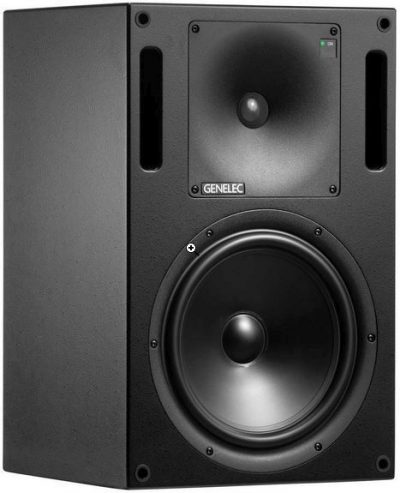

Kirsch Audio SQ6 (discontinued!)
At this point, I would like to mention a speaker that is no longer manufactured but is occasionally available on the second-hand market and has an equally wonderful sound. It is the Kirsch Audio SQ6 speaker. It is a passive speaker that was also available in the SQ5 and SQ8 versions. For me, this box is a kind of insider tip.
The mid-sized SQ6 is built for use as a near-field monitor. The big yet extremely lightweight and fast low-mid-frequency transducer offers a brilliant mid reproduction and produces extremely authentic and precise bass and sub-bass that I never expected. Using an additional subwoofer is unnecessary – even if you produce Techno/Minimal music/samples like me. The frequency response/operating range from 35 Hz – 20 KHz (-6 dB) is amazing. These speakers can be used as an ultra-precise and musical mixing monitor.
What also surprises me is that the bass is audible even at lower volume levels. At lower volumes, some speakers make it more difficult to judge the bass. This is a huge benefit for me because I don’t usually listen too loudly. A disadvantage compared to the Mirra 14 is that it has a very small sweet spot.
If you’re lucky enough to get a used pair, the current price is around 1500 €. I find the look of these speakers a bit strange, but that’s a matter of taste. But if you only go by the sound (and that’s what’s important), I believe you’re getting a speaker that still beats most of the competition today.
This has been my personal list of the best studio monitors, and I hope you enjoyed reading this. I will update this category regularly.




